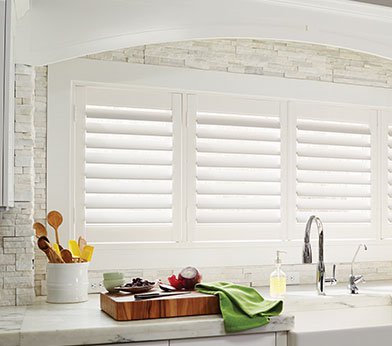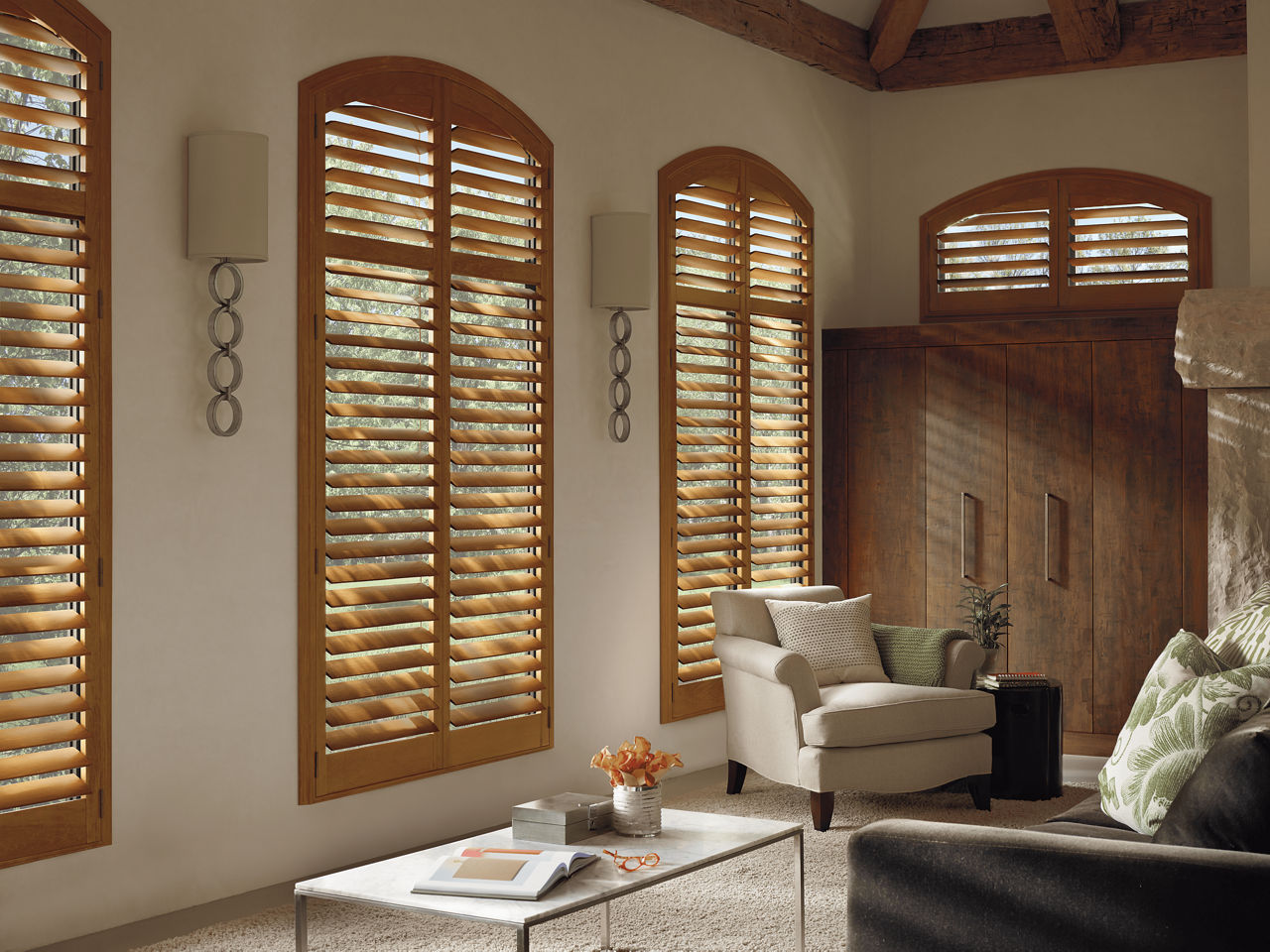Motorized Blinds Phoenix: High-Tech Solutions for Your Home
Motorized Blinds Phoenix: High-Tech Solutions for Your Home
Blog Article
Recognizing the Distinctions Between Blinds and Shutters for Your Window Therapy Needs: A Comprehensive Guide to Aid You Select the Ideal Alternative
When thinking about window treatments, recognizing the distinctions between blinds and shutters is vital for making an educated option that lines up with your useful and visual needs. Blinds use adaptability and affordability, while shutters show classic elegance and offer improved insulation. As you evaluate these choices, it's important to take into consideration not just the instant allure, but also the lasting benefits and disadvantages of each. To navigate this decision effectively, several vital aspects have to be evaluated, triggering a better exam of exactly how each option can distinctly serve your environment.
Summary of Blinds
When considering window therapies, blinds are frequently a preferred selection due to their versatility and functionality. They are readily available in numerous products, including wood, synthetic wood, aluminum, and plastic, allowing house owners to select choices that complement their interior layout while fulfilling sensible requirements. Blinds are designed to control light and privacy properly; their slatted framework can be gotten used to permit differing levels of sunshine, making them ideal for various spaces and activities.
In addition, blinds come in a variety of designs, such as vertical, straight, and mini blinds, giving homeowners with enough choices to fit their details home window sizes and shapes. Their ease of installation and maintenance even more improves their appeal; most blinds can be cleansed with a simple cleaning or wipe down, guaranteeing they stay attractive gradually.
Additionally, contemporary advancements have actually led to the intro of motorized blinds, using comfort and the capability to manage them remotely. This technological development provides especially well to those looking for enhanced functionality. Generally, blinds work as a sensible and trendy window treatment alternative for a variety of property and business applications.

Introduction of Shutters
Shutters are an extremely related to window therapy choice that incorporates aesthetic allure with phenomenal performance - window treatments phoenix. Offered in numerous designs, consisting of plantation, traditional, and café, shutters can boost the character of any kind of area while offering effective light control and privacy. Constructed from products such as timber, composite, or vinyl, they are created to withstand deterioration, making them a durable option for property owners
Among the key benefits of shutters is their flexibility. They can be custom-fitted to nearly any type of home window sizes and shape, allowing for a tailored look that complements your home's design. Additionally, shutters offer exceptional insulation homes, assisting to regulate interior temperatures and potentially reducing power prices.
Shutters are additionally very easy to maintain, needing just periodic cleansing and cleaning to keep them looking pristine. Their durable style indicates they are less most likely to be harmed contrasted to other home window treatment options. Shutters can boost property value, as they are usually checked out as a costs attribute by prospective customers. In summary, shutters give an ageless solution that stabilizes elegance, usefulness, and long-term financial investment possibility for any window therapy needs.
Key Distinctions

Another secret difference is the approach of procedure. Blinds operate via a system of cables or wands that tilt or increase the slats, making it possible for users to change light levels quickly. Shutters, nonetheless, feature pivoted panels that can be opened up or closed totally or gotten used to regulate light and personal privacy.
Cosmetically, blinds commonly offer a contemporary, structured appearance, while shutters lend a traditional, ageless allure to interiors. Additionally, shutters can boost insulation due to their solid building, which blinds may not supply.
Cons and pros
Blinds are frequently preferred for their convenience and cost. Furthermore, blinds are reasonably easy to install and can be changed to manage light and personal privacy successfully.
On the other hand, shutters are renowned for their toughness and visual charm - motorized blinds phoenix. Made generally from timber or composite products, they provide superb insulation and can improve a home's curb charm. Shutters normally call for less maintenance and can provide an included layer of safety. Their initial cost is usually greater than blinds, which might discourage budget-conscious homeowners. Installation can likewise be much more complicated, frequently requiring professional help.
Choosing the Right Option
Selecting the ideal home window therapy for your home entails careful consideration of various variables, including performance, appearances, and budget. Blinds and shutters each deal unique advantages and drawbacks that can influence your choice.
Performance is critical; consider just how much light control and privacy you prefer. Blinds generally enable even more versatility in adjusting light degrees, while shutters give durable insulation and soundproofing homes. Shutters might be the far better choice due to their strong building and construction. if energy performance is a priority.
Appearances additionally play an essential role. Blinds are available in different materials and designs, making them ideal for contemporary insides. On the other hand, shutters exude a classic style, boosting the overall building charm of your home.
Budget plan restraints are equally crucial. Blinds normally provide a much more economical initial financial investment, whereas shutters can be more expensive but might provide long-term value through resilience and energy savings.
Eventually, the right option relies on your specific requirements and preferences - window shades phoenix. By assessing these variables meticulously, you can pick a window treatment that harmonizes with your lifestyle, enhances your living space, and fits within your financial parameters
Final Thought
Finally, choosing between blinds and shutters requires mindful factor to consider of numerous variables, including capability, visual choices, and budget plan constraints. Blinds use versatility and affordability, making them suitable for modern-day designs, while shutters supply an ageless elegance and boosted insulation, albeit at a greater price and installment intricacy. Inevitably, the choice rests shutters phoenix on individual requirements and the desired setting of the home, ensuring that the picked home window therapy aligns with both functional and stylistic needs.
When considering window treatments, recognizing the distinctions in between blinds and shutters is crucial for making an educated option that lines up with your aesthetic and useful demands. Blinds supply versatility and affordability, while shutters exude classic refinement and give improved insulation.Numerous elements identify blinds and shutters as home window therapy alternatives, each catering to various functional needs and visual choices. Furthermore, shutters can boost insulation due to their solid building and construction, which blinds might not give. Blinds offer adaptability and price, making them suitable for modern-day designs, while shutters supply an ageless beauty and enhanced insulation, albeit at a higher cost and installation complexity.
Report this page